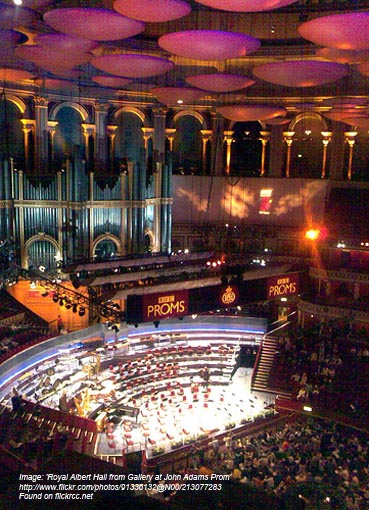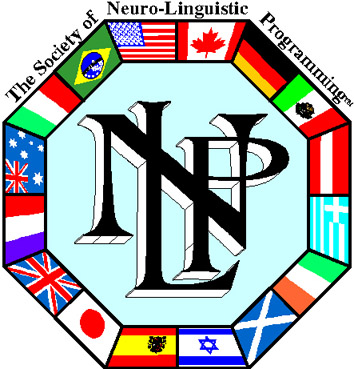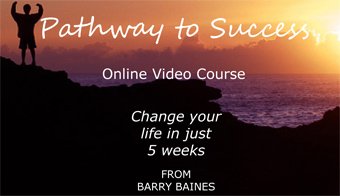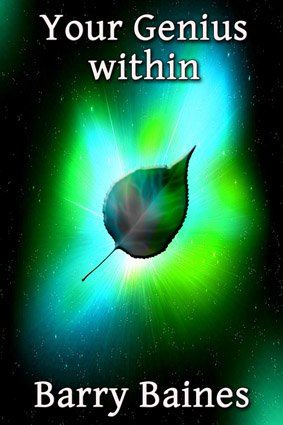Explaining NLP anchors
NLP techniques - an NLP secret
Music
The need for explaining NLP anchors and how they naturally occur, rather than the pure mechanics of creating and firing them, struck me particularly when I was listening to some very powerful music earlier.

To call them “NLP anchors” as we do is something of a misnomer because anchors occur naturally many times in our everyday lives without our even knowing it.
We call them “NLP anchors” merely for classification purposes and to show how they may be deliberately created, stacked, fired and collapsed.
You can read more about that in the article on this website about NLP anchors and a second article, How to hypnotise your audience, which includes an explanation on the principle of spatial anchoring.
Explaining NLP anchors and Pavlov
Pavlov, a Russian scientist, undertook some work on the digestive system in animals and the responses that were evoked in particular circumstances.
If you have ever had a dog as a pet you will have seen, as I have done, how they drool when they sense that food is about to arrive.
When I carved the Sunday roast our old dog always used to sit at my feet and await his scraps, and by the time I was ready to serve them to him he was drooling.
Pavlov’s interest was aroused when he noticed that dogs drooled whenever they saw a lab assistant in a white coat. What was of particular interest to him was that there was no food around at the time.
When he enquired, he discovered that when dogs were given food it was served by a lab assistant in a white coat.
So Pavlov carried out a number of experiments, one of which was to sound a bell when the dogs were fed. In that way they associated the sound of the bell with the food.
After a while he tried sounding the bell without producing food and he noticed that the dogs were drooling. So the dogs by that time had become conditioned.
When the bell was sounded, food was expected and the saliva glands sprung into action ready to break down the food when it entered the mouth.
We call this a conditioned reflex. As I wrote above, we create naturally occurring anchors all the time.
Explaining NLP anchors and the Queen’s Silver Jubilee
Let me get back for a moment to the music and the enormous power anchors can have. I had set up some tracks to play on my computer from Last Night of the Proms as I was writing another page for the website.
The initial tracks were rousing stuff. The coronation anthem, Zadok the Priest, immediately brought back memories of the Queen’s silver jubilee celebrations in 1977 when I was a member of a choir singing the very same anthem.
Explaining NLP anchors and our daughter’s wedding
It wasn’t just the singing of the anthem I remembered. The location came back, the rainy weather, other choir members singing with me and other visitors who attended. A stream of pictures came flowing into my mind.

When the second track, The Trumpet Voluntary, started I was immediately transported to the moment to our elder daughter’s wedding just over ten years ago, and as the music played I was once again escorting her down the aisle.
Once again, pictures of the whole day came flooding into my mind just as if a door had been opened and they were all released.
Explaining NLP anchors and the Last Night of the Proms
By the time the third track started, the patriotic song Rule Britannia, I was feeling very animated, and the memories this time were attending live performances of the Last Night of the Proms and, again, singing the song and waving flags with my wife and children.
Music is known to be a strong anchor with most people but I can’t help feeling it has a particularly powerful effect on me. It was not just the pictures associated with the sounds, but the emotions that were also stirred.
Explaining NLP anchors and my father’s death
But all of a sudden my mood changed dramatically with the playing of Nimrod . Those who know it will recall that it is a beautiful adagio from Elgar’s Enigma Variations.
From animation I soon changed to a reflective sadness. But not only did I remember my dear father’s funeral service, I also vividly recalled that of my mother who had died seven years earlier.
To use the words I have so often used in other articles on this website, I saw what I saw, I heard what I heard, and I felt what I felt. And the feeling was quite intense.
Explaining NLP anchors – the feeling and the smell
At my mother’s funeral as we followed the coffin into the crematorium my father gripped my right arm for support. As Nimrod played, I could feel my father gripping my arm just as if he were there beside me.
I vividly recalled the smell of his skin and I could feel him there as if he were sitting with me at my desk. It was so intense that a tear escaped from my right eye and slipped down my cheek.
I haven’t related this story for any morbid reason. Although there was an inherent sadness in it, there was also great beauty and a feeling of peace because for a short while my father was here with me just as if he were alive again.
The reason I have told the story is to demonstrate the power of naturally occurring anchors in certain circumstances.
Explaining NLP anchors – so many years ago
To me the story is all the more remarkable because my mother died in 1982 and my father died in 1989, yet the music conveyed me, in 2013, to the very time of their funeral services.

Clearly, audible and kinaesthetic anchors have a strong effect with me. In case you are wondering, I mention kinaesthetic anchors because I could recall so vividly the feeling of my father’s grip upon my arm.
But visual anchors, olfactory (smell) and gustatory (taste) anchors can be equally as strong in different circumstances for different people.
When our daughters were small children, on a Saturday morning my father would often take them into a baker’s shop for iced buns.
They are mature adults now but cannot smell bread without recalling their visits to the bakers with my father.
Explaining NLP anchors – phobias and building positive anchors
So it is perhaps not surprising, given the powerful nature of naturally recurring anchors, that people develop phobias because of the occurrence of a single unpleasant incident.
What NLP does is, firstly, to recognise that anchors occur naturally and then show you how you can deliberately set a positive anchor or, equally importantly, collapse a negative anchor.
Other pages on this website will show you how to do that. In the meantime, be very careful, especially when dealing with young or impressionable people, that you don’t inadvertently set in them negative anchors that may cause them trouble in the future.
Concentrate instead on giving them happy, well rounded experiences, so that they are stacked with positive anchors that they can draw upon at will in the future.
Gain FREE access to my self-confidence video
To gain free access to my self-confidence video enter your email address and first name in the box below. This will also keep you up-to-date with my free newsletter Inspirations.
As a bonus for subscribing you'll receive the first three chapters of my book Towards Success, where you can learn more about NLP techniques, from Anchors to Modelling, and my 50 favourite inspirational quotations.
Return from Explaining NLP anchors to
The Secret of Mindpower & NLP Home
Return to Site Search & Contents Page

Change your life in just 5 weeks
Discover the pathway to success with my online video course. Learn more

Download NEW ebook Your Genius Within and find out how to uncover your own inner genius

NLP Articles
- Anchors
- Anchors explained
- Anger Management tips
- Anxiety Panic Attacks
- Beating disappointment
- Beating drug addiction
- Best self-help book
- Big events
- Body control module
- Body language attraction
- Body language flirting
- Body language in communication
- Body language interpretation
- Body language of a liar
- Body language signs
- Boost self-confidence
- Building Rapport
- Changing bad habits
- Changing beliefs
- Changing States
- Children
- Christmas (Holidays)
- Christmas & New Year greetings
- Chronic pain management
- Conquering Fear
- Crohn's Disease
- Cure for a Phobia
- Deal with your fear
- Deletion
- Determining your destiny
- Developing your senses
- Disaster to Triumph
- Distortion
- Drawing the line
- Embedded Commands
- Enthusiasm
- Exams
- Expecting the Best
- Expert Relationship Advice
- Eye accessing cues
- Fear of driving
- Fear of elevators
- Fear of flying
- Fear of the dentist
- Fear of vomiting
- Fear, Mental Blocks & Hesitation
- Fear, Uncertainty and Doubt
- Fight or flight response
- Finding Solutions
- Forever Worried?
- Friendly persuasion
- Generalisation
- Get the life you want
- Getting lucky
- Getting over your past
- Goal Setting Tips
- Goal Setting Tools
- Goal Setting Tools, More
- Great self-help books
- Grief
- Happy retirement
- Healthy Mind
- High blood pressure
- How long will I live?
- How to be lucky
- How to read body language
- Hypnosis & NLP
- Hypochondria
- Imagining perfect performance
- Improving speed reading
- Instant Mood Lift
- Interviews
- Knowing yourself
- Learn NLP
- Life Values
- Maintaining weight loss
- Make you thin
- Making it happen
- Managing change
- Meddling Mom
- Meeting People
- Mental rehearsal techniques
- Meta Model
- Metaphor
- Modelling
- Modelling Genius
- More NLP techniques for weight loss
- NLP Books
- NLP Courses
- NLP Practitioner Course
- NLP Master Practitioner Course
- NLP Secret
- NLP jargon buster
- NLP Modelling helped me
- OCD symptoms
- OCD treatment
- Overcoming low self-esteem
- Overcoming stage fright
- Pacing & Leading
- Persuasion
- Presuppositions
- Presuppositions (2)
- Problem solving
- Public Speaking
- Reaching agreement
- Reframing
- Self-confidence
- Self limiting beliefs
- Self-image
- Sportsmen Guide
- Stage fright tips
- Stammering
- States
- Stop binge eating
- Stop Smoking
- Subliminal Persuasion
- Success Principles
- Techniques for persuasion
- Techniques for weight loss
- The meaning of NLP
- Time & NLP
- Towards
- Towards & Away
- Ulcerative colitis
- Weight Loss
- Weight loss techniques
Articles on HYPNOSIS:
- Big events
- Conversational Hypnosis
- Covert hypnosis
- Deepening self-hypnosis
- Depression Hypnosis
- Handshake interrupt
- How to do self-hypnosis
- How to hypnotise your audience
- Hypnosis and Weight Loss
- Hypnosis NLP
- Hypnosis: Right or Wrong
- Hypnosis Stories
- Hypnotic language
- Hypnotism Stories
- Hypnosis story for you
- Hypnosis to quit smoking
- Instant self-hypnosis (age regression)
- Practical self-hypnosis
- Self-Hypnosis
- The Milton Model
Articles about THE SECRET of:
- Abundance Mentality
- Achieving more
- Beating Domestic Violence
- Being bothered
- Being Happy
- Best Self-help Book
- Conquering road rage
- Coping with criticism
- Dealing with pride
- Defeating stress
- Discover the secret of wealth
- Genius
- Getting off to sleep
- Getting over a break up
- Getting over your temper tantrum
- Health
- How to deal with grief
- Imagination
- Influence
- Love
- Making Money
- Managing others
- Memorising a Deck of Cards
- Memory
- My Success
- Organising Memory
- Overcoming tiredness
- Overcoming worry
- Perpetual energy
- Remembering
- Secret Law of Attraction books
- Sleeping well
- Speed Reading
- Super Memory
- Surviving a recession
- Surviving negativity
- The Secret Law of Attraction
- Towards
- Teachers of the Secret
- Waiting for God
- Wealth Building
- Weight Loss
Articles on GENIUS and MIND POWERS:
- Activating genius
- Become a genius
- How long will I live?
- Mind Powers
- Misty Reflections
- Modelling Genius
- The Secret of Genius
Articles about MEMORY:
Articles about RELATIONSHIPS:
- Beating domestic violence
- Body language flirting
- Expert relationship advice
- Healthy family relationships
- Hurt feelings
- Love
- Relationship problem advice
- Signs of true love
- The secret of getting over a break up
Articles on WEIGHT LOSS:
- Best Weight Loss Plan
- Body control module
- Easy weight loss
- Hypnosis and Weight Loss
- Maintaining weight loss
- More NLP techniques for weight loss
- NLP techniques for weight loss
- NLP techniques to make you Thin
- NLP weight loss techniques
- Stop binge eating
- The Secret of weight loss
- Weight control help
- Weight loss tips
- Why have I lost weight?
Articles on WEALTH:
Articles about COACHING:
- Barriers to effective communication
- Communication
- Executive Business Coaching
- Feedback
- Free interview tips
- Free Life Coaching
- Goal Setting Tips
- Goal Setting Tools
- Goal Setting Tools, More
- Life & Executive Coaching
- Personal Development Plan
- Problem solving
- Success Principles
- The Secret of my Success
- Time Management
Articles on SECRET and INSPIRATIONAL TEACHERS:
- Bill Harris
- Bob Proctor
- Dr John F DeMartini
- Hale Dwoskin
- Jack Canfield
- Joe Vitale
- John Assaraf
- Lisa Nicholls
- Michael Bernard Beckwith
- Stephen R Covey
Real Women of Genius Articles:
Real Men of Genius Articles:
- Abraham Lincoln
- Albert Einstein
- Antoni Gaudi
- Carl Jung
- Charles Darwin
- Charles Dickens
- Christopher Wren
- Confucius
- George Washington
- Hannibal
- Horatio Nelson
- Isaac Newton
- Julius Caesar
- Lawrence of Arabia
- Leonardo da Vinci
- Michelangelo
- Mohatma Gandhi
- Napoleon Bonaparte
- Nicolas Copernicus
- Oscar Wilde
- Rembrandt
- Robert Burns
- R L Stevenson
- Socrates
- Walt Disney
- William Shakespeare
- Wolfgang Amadeus Mozart








New! Comments
Have your say about what you just read! Leave me a comment in the box below.